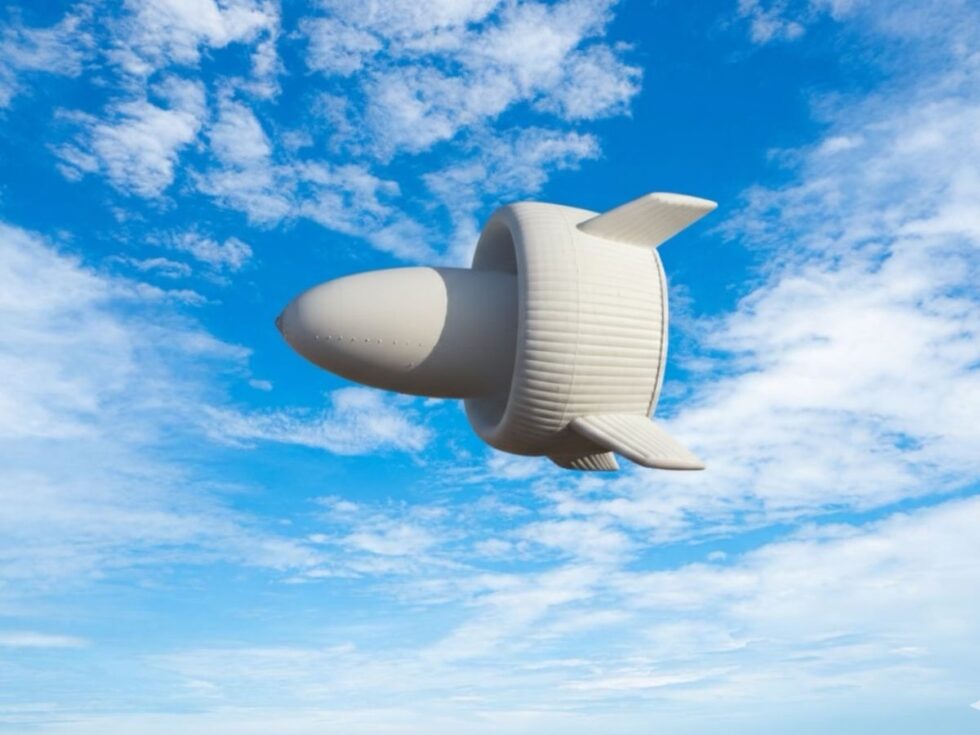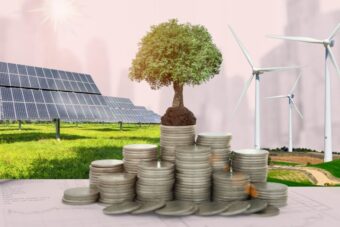In September 2025, China carried out the first full-scale test of the S1500, the world’s largest flying wind generator, in the arid desert of Hami. Suspended by helium and secured by high-strength cables, the structure reached an output of 1 megawatt through 12 turbines producing 100 kW each. Measuring 60×40×40 meters, the airborne platform transmits electricity to the ground through the same cables that keep it aloft. According to G.Business, this test is regarded as one of the most ambitious experiments in renewable energy in recent years.
How airborne turbines differ from traditional wind farms
The key advantage of airborne turbines lies in their altitude. Unlike ground-based wind farms, the S1500 can ascend to altitudes of 300 to 1500 meters, tapping into stronger and more consistent winds. This allows for higher and more stable energy yields. The absence of a massive tower structure also means the system requires minimal land use and creates far less disruption to landscapes — a critical factor for regions where space is limited or environmental impact is politically sensitive.
Comparable pilot projects have been tested in Europe and the United States, including Airborne Wind Energy Systems (AWES) led by European consortia and prototypes from NASA in the early 2000s. However, none has yet reached the scale and operational capacity demonstrated by the Chinese S1500.
Advantages of China’s S1500 project
The S1500 highlights several transformative benefits for renewable energy strategies:
- Access to stronger winds: consistent flows at higher altitudes make energy production more predictable.
- Mobility and scalability: the system can be relocated or adjusted to meet shifting energy demands.
- Lower land footprint: unlike traditional farms, only anchoring and cable systems occupy ground space.
- Potential cost reduction: large-scale production could make airborne turbines economically competitive.
- Global relevance: suitable for deserts, offshore platforms, and remote regions where conventional turbines are impractical.
Energy analysts suggest that if China can scale this technology, it may accelerate the diversification of renewable portfolios worldwide.
Challenges and limitations
Despite its promise, the technology faces significant obstacles:
- Technical risks: stabilizing such massive structures in turbulent weather remains a challenge.
- High costs: the helium structure, complex cabling, and maintenance requirements make operations expensive.
- Regulation: airspace control is tightly regulated, particularly in densely populated regions.
- Competition: ground-based wind farms and solar power enjoy mature supply chains and established financing models.
European researchers warn that airborne turbines may face resistance in markets where regulatory approval is slow and public acceptance of aerial structures remains uncertain.
The road ahead: China’s ambitions
Beijing has announced plans to begin serial production of the S1500 in 2026. The first units are expected to be connected to China’s national power grid as part of its long-term decarbonization agenda. If successful, airborne turbines could account for 5–10% of renewable energy capacity by 2035, particularly in regions where traditional energy projects face geographic or political constraints.
For China, the S1500 is not only an energy breakthrough but also a geopolitical signal. By pushing ahead with large-scale renewable innovation, Beijing strengthens its position as a global leader in clean technology — a role the European Union has long sought to maintain.
Global perspective
The success of the S1500 could inspire renewed investment in airborne energy systems worldwide. In Europe, firms such as Kitepower (Netherlands) and research groups in Germany have experimented with smaller kite-based turbines. In the United States, Google’s Makani project attempted similar concepts but was shut down in 2020 due to technical hurdles and costs.
China’s achievement in Hami suggests that with state backing and large-scale funding, airborne wind energy could move from experimental labs into commercial reality.
Stay connected for news that works — timely, factual, and free from opinion — and insights that matter now: BYD Yangwang U9 Xtreme: The electric hypercar that shattered all limits

